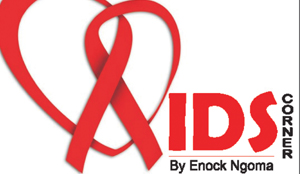 Just a few days ago, I was in Livingstone where I had an opportunity to give a talk to Livingstone-based journalists who have an interest in reporting health and development.
Just a few days ago, I was in Livingstone where I had an opportunity to give a talk to Livingstone-based journalists who have an interest in reporting health and development.
During my talk, I emphasised the need for factual reporting when covering issues of HIV/AIDS. Research is important and the use of credible sources.
Having delivered this talk, this week I received the following news report from Kenya on irresponsible reporting which I thought I can share with you the reader and especially my colleagues in the media fraternity:
By Love Matters Kenya
Newspaper coverage of the latest Kenyan HIV statistics has tended to sketch a doomsday scenario – for which there is no evidence. Is this misrepresentation of the facts based on sensationalism or ignorance, wonders a sexual health expert.
Kenyan HIV Estimates 2014, released by the National AIDS Control Council, has been covered broadly in the national media. Unfortunately, much of the press seems bent on sketching a doomsday scenario – which is generally at odds with the facts.
‘Kenya’s shocking HIV figures’ published by the Daily Nation on the first page of its DN2 section, originally piqued my curiosity. As far as I knew, things were going pretty well in Kenya when it comes to HIV.
Sure, some aspects of the fight against HIV definitely need more attention, but overall the situation is much less bleak than a few years ago and shows slow but steady improvement.
While reading the article, I realised the author either had no idea what she was talking about or simply felt the need scare people.
Long-established facts were presented as new discoveries; negating aspects of the report were simply ignored.
It starts with the headline: ‘With 100 000 new infections every year,Kenya is in the red!’ In fact, while Kenya had 105,000 new infections in 2,000, this number has decreased 15 per cent to 88,000 by 2013. Isn’t that good news?
Kenya ranks 11th in the world, the article also exhibits other number troubles. For example, the
number of people needing anti-retroviral (ARV) therapy seems to have tripled in the last eight years. Shocking, right? No, not really.
Since 2005, the World Health Organisation recommends that people with HIV should start taking their ARVs much earlier. The result? A greater total number of people on ARVs.
The author also claims that the reason why more women than men are infected is due to an increase in women getting tested.
This is indeed a factor – but a very small one. Women, especially in southern and eastern Africa, are just much more prone to getting infected than men due to reasons of biology and social circumstances.
Coverage of the report in The Standard and The Star did stick to the facts and celebrated the positives of the report. But they, like the Daily Nation, did cry outrage about ‘Kenya is 4th in terms of HIV infections in the world’.
Nowhere in the report is this statistic stated, so one assumes it was presented during the report’s launch.
And yes, it’s true that as far as total numbers go, Kenya ranks fourth with 1.6 million people infected with HIV.
But public health organisations never work with total numbers; they work with prevalence in a population. Kenya has an HIV prevalence of 5.6 per cent: 1.6 million out of 44 million Kenyans. And so, Kenya actually ranks as 11th in the world.
Unfortunately, the twisting and turning of facts happens all the time in journalism around HIV. For example in 2012, The Daily Nation wrote ‘Rich Kenyans hardest hit by HIV, study says.’ The author seemed unaware that rich Kenyans are far more likely to have continued access to ARVs and therefore live longer – making the ‘pool’ (prevalence) of rich Kenyans living positively much larger.
True facts
Meanwhile, there’s the Kenyan government’s response to Kenyan HIV Estimates 2014. It seems they want to give cash to girls to stop them from having sex early, according to The Standard. But that won’t change a thing. Perhaps a few less girls will be tempted by sugar daddies. But that’s it.
What Kenya really needs is a more sustainable and thought-through HIV prevention programme, complete with resources that are easily accessible for those – including journalists – who want to know the true facts of life.
It’s important for journalists to always report factually on health issues especially HIV/AIDS.
For comments write to knoxngoma@gmail.com or SMS/call +260955883143






